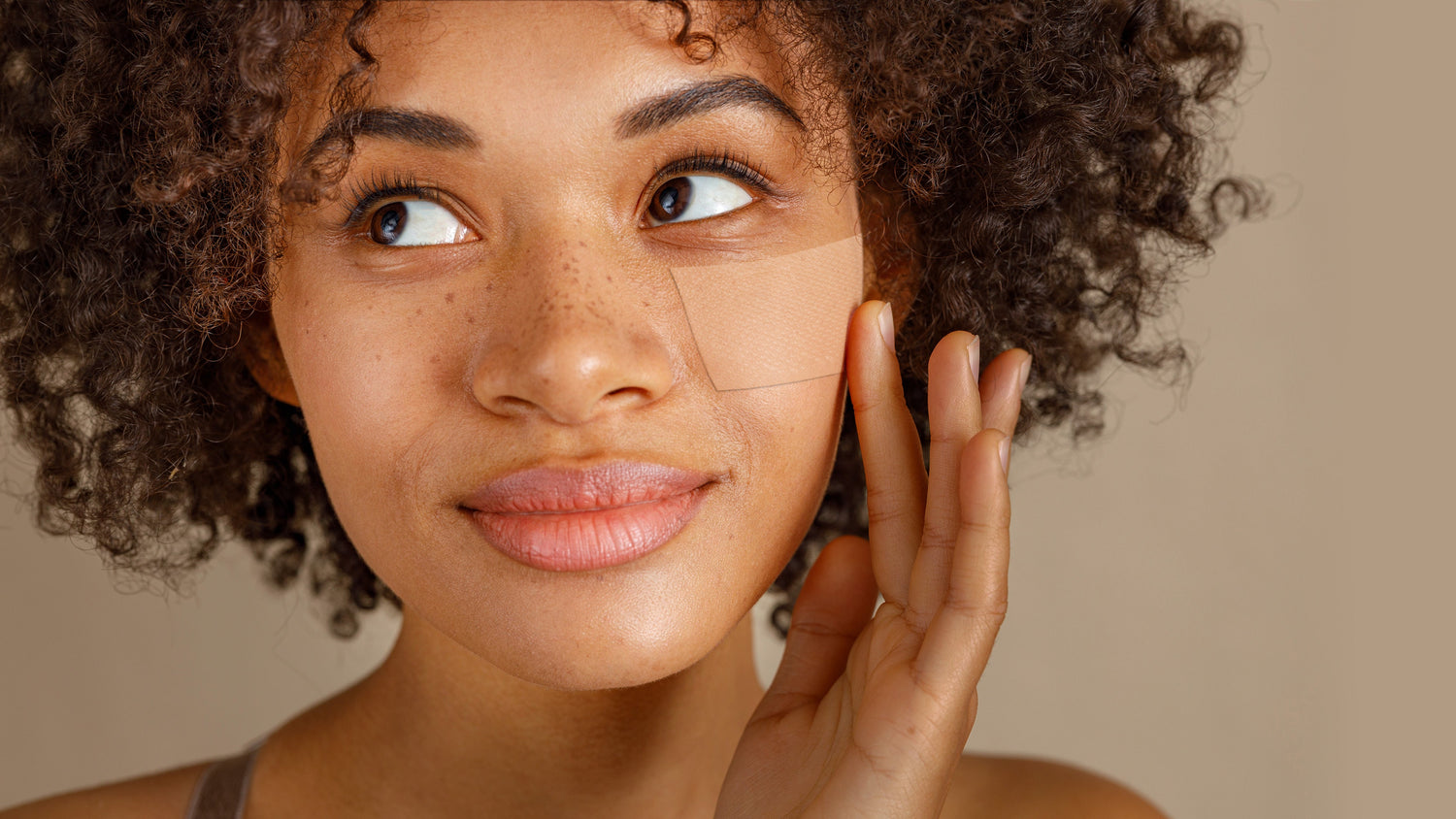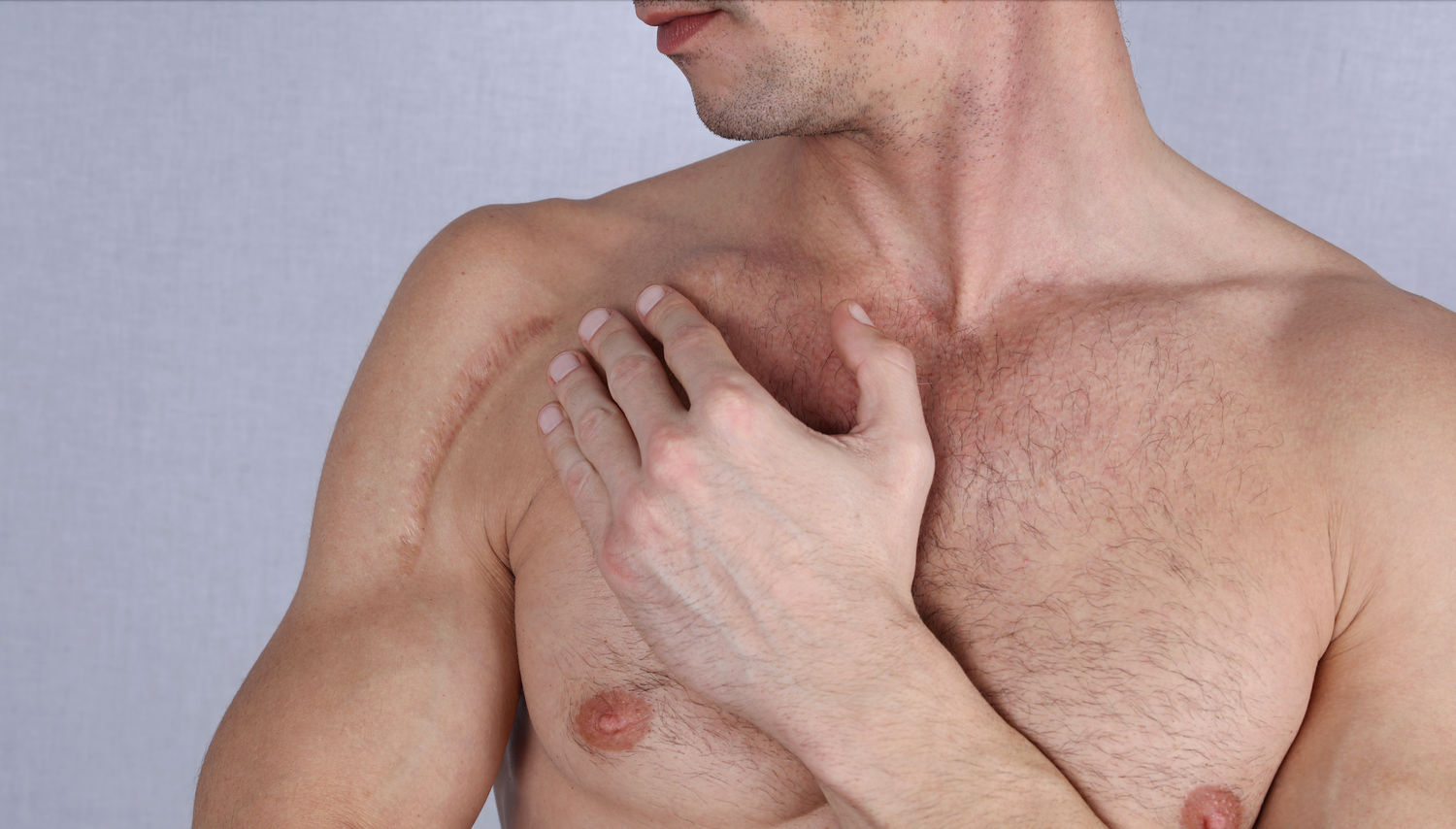Dealing with keloid scars can be a frustrating journey. These thick, raised scars can grow beyond the original injury, causing discomfort and self-consciousness. If you're struggling with keloids, you are not alone; an estimated 11 million people are affected by them [4]. The good news is there are many keloid scar treatment options that work, and this guide will help you find the right path to smoother skin.
First, What Exactly Are Keloid Scars?
Before exploring solutions, it's important to understand what a keloid is. Unlike typical scars, keloids result from an overproduction of collagen, causing scar tissue to grow beyond the original wound's boundaries.
Key characteristics include:
-
Appearance: They are often firm, rubbery lesions or shiny, fibrous nodules [5].
-
Color: Their color can range from pink to red or dark brown.
-
Symptoms: Many people experience severe itchiness, pain, or tenderness in the area [5].
-
Development: They can appear 1 to 3 months after a skin injury and sometimes take up to a year or longer to form [5].
While anyone can develop keloids, they are most common in people aged 10 to 30 and occur more frequently in individuals of sub-Saharan African descent [3].
The Most Effective Keloid Scar Treatment Options That Work
Finding the right approach can make a world of difference. Here are the top clinically-backed options available in 2025.
1. Silicone Scar Products: Your First Line of Defense
For an accessible and non-invasive first step, silicone is the gold standard in at-home scar care and a recommended first-line option [3]. It works by hydrating the skin, which helps regulate collagen production, leading to a softer, flatter scar. Consistent use can result in a significant reduction in scar texture, color, and height [1].
Nuvadermis silicone scar products offer a professional-grade solution for home use. Our dermatologist-approved scar gels & silicone strips provide gentle coverage to support the skin's restoration process. For optimal results, apply for at least 12 hours a day for a minimum of three months.
2. Corticosteroid Injections: Professional Medical Treatment
Intralesional corticosteroid injections are a common medical option for reducing the size and symptoms of established keloids [1]. These injections work by reducing fibroblast activity and calming inflammation, which can alleviate pain and itching.
You will likely need multiple sessions, typically every 4-6 weeks. However, these injections have a high recurrence rate when used alone [3]. For this reason, experts recommend combining injections with other methods. Using Nuvadermis silicone sheeting after injections can significantly improve your results.
3. Pressure and Compression Therapy: A Gentle, Continuous Approach
Evidence supports pressure therapy as another first-line method, especially alongside silicone products. By applying consistent pressure, these devices reduce blood flow to the scar, which can help flatten it and minimize regrowth [4]. This method requires wearing a device for 12-20 hours daily for several months. Combining silicone gel sheeting with compression is one of the keloid scar fixes that actually flatten, delivering better results than using either method alone.
4. Laser Therapy: Precision-Targeted Treatment
Laser therapy is a popular approach for reducing the height and fading the color of keloids [3]. Lasers like the Pulsed Dye Laser (PDL) target blood vessels within the scar, reducing redness and promoting a flatter appearance. For superior results, dermatologists often combine laser sessions with other methods like corticosteroid injections.
5. Cryotherapy (Freezing): For Smaller Keloids
Cryotherapy uses liquid nitrogen to freeze and diminish scar tissue. This method is most effective for smaller keloids. However, it carries a risk of hypopigmentation (skin lightening), especially on darker skin tones [2]. Always discuss this risk with your provider. To enhance the outcome, consider using Nuvadermis silicone products after the procedure.
6. Surgical Excision: Only with Adjuvant Therapy
Surgical removal alone is not recommended due to a very high recurrence rate. To be successful, surgery must be followed by adjuvant (follow-up) care. An effective strategy is a "triple combination": surgical removal, a course of corticosteroid injections, and consistent use of silicone sheeting to erase raised scars.
7. Radiation Therapy: For Resistant Cases
For severe, recurrent keloids, radiation therapy is an established post-surgical option [7]. Used in low doses after surgery, radiation helps prevent regrowth by mitigating fibroblast activity. Recent studies confirm its effectiveness in reducing recurrence when combined with surgery, making it a powerful choice for stubborn cases [6].
The Bottom Line: Combination Therapy is Key
Keloids are challenging and rarely respond to a single method. While many options exist, none are uniformly successful when used alone [4]. Dermatologists almost always recommend a combination approach for the best outcome, a strategy supported by recent systematic reviews [8].
Powerful combinations include:
-
Nuvadermis silicone products + corticosteroid injections: A top-tier combination for most people.
-
Surgical excision + radiation therapy + silicone sheeting: The go-to strategy for large, resistant keloids.
Making the Right Choice for Your Situation
Choosing the best approach depends on several factors:
-
The size, age, and location of your keloid.
-
Your skin type and medical history.
-
Your lifestyle and ability to be consistent with a regimen.
This table compares the leading options to help you decide:
| Method | Invasiveness | Time to Results | Best For |
|---|---|---|---|
| Silicone Sheets | Non-invasive | 2–4 months | All keloid types; first-line care & prevention |
| Corticosteroid Injections | Minimally-invasive | 2–6 months | Established or symptomatic keloids |
| Laser Therapy | Minimally-invasive | 3–6 months | Reducing redness and improving texture |
| Cryotherapy | Minimally-invasive | 2–4 months | Small keloids |
| Surgical Excision | Invasive | 6–12 months (with follow-up) | Large, persistent keloids; requires adjuvant care |
Your Next Steps to Smoother, More Confident Skin
Don't wait to take action. The sooner you begin addressing a keloid, the better your chances of success. Start by consulting a dermatologist familiar with the many keloid scar treatment options that work.
We recommend beginning your journey with a gentle, at-home solution like Nuvadermis advanced scar care products. Consistent application of Nuvadermis silicone scar sheets or tape is crucial for managing scar appearance. With the right approach and dedicated care, significant improvement is within reach. Explore the Nuvadermis solutions today and start your journey toward reclaiming your confidence.
Citations
- https://nyulangone.org/conditions/scars-keloids/treatments/medical-treatment-for-scars-keloids
- https://aad.org/public/diseases/a-z/keloids-self-care
- https://aafp.org/pubs/afp/issues/2009/0801/p253.html
- https://pmc.ncbi.nlm.nih.gov/articles/PMC8007468
- https://my.clevelandclinic.org/health/diseases/keloid-scar
- https://pmc.ncbi.nlm.nih.gov/articles/PMC11960156
- https://medparkhospital.com/en-US/disease-and-treatment/radiation-therapy-for-keloid-scars
- https://systematicreviewsjournal.biomedcentral.com/articles/10.1186/s13643-023-02192-7




